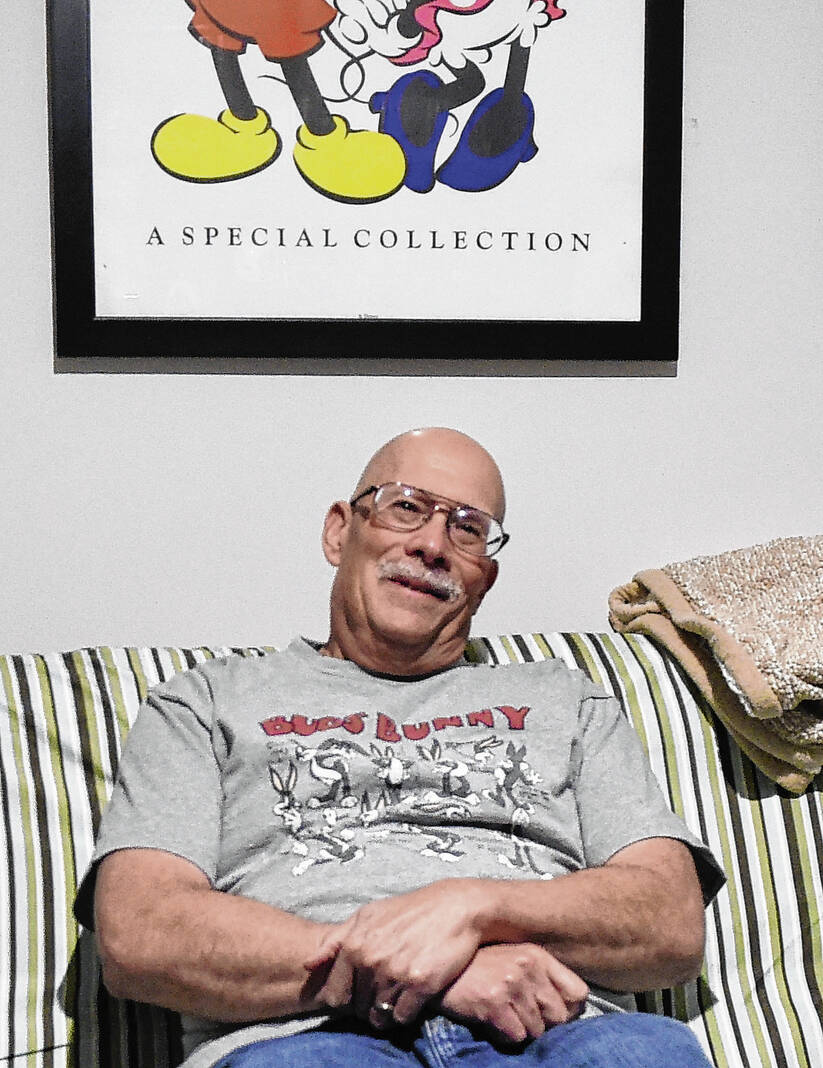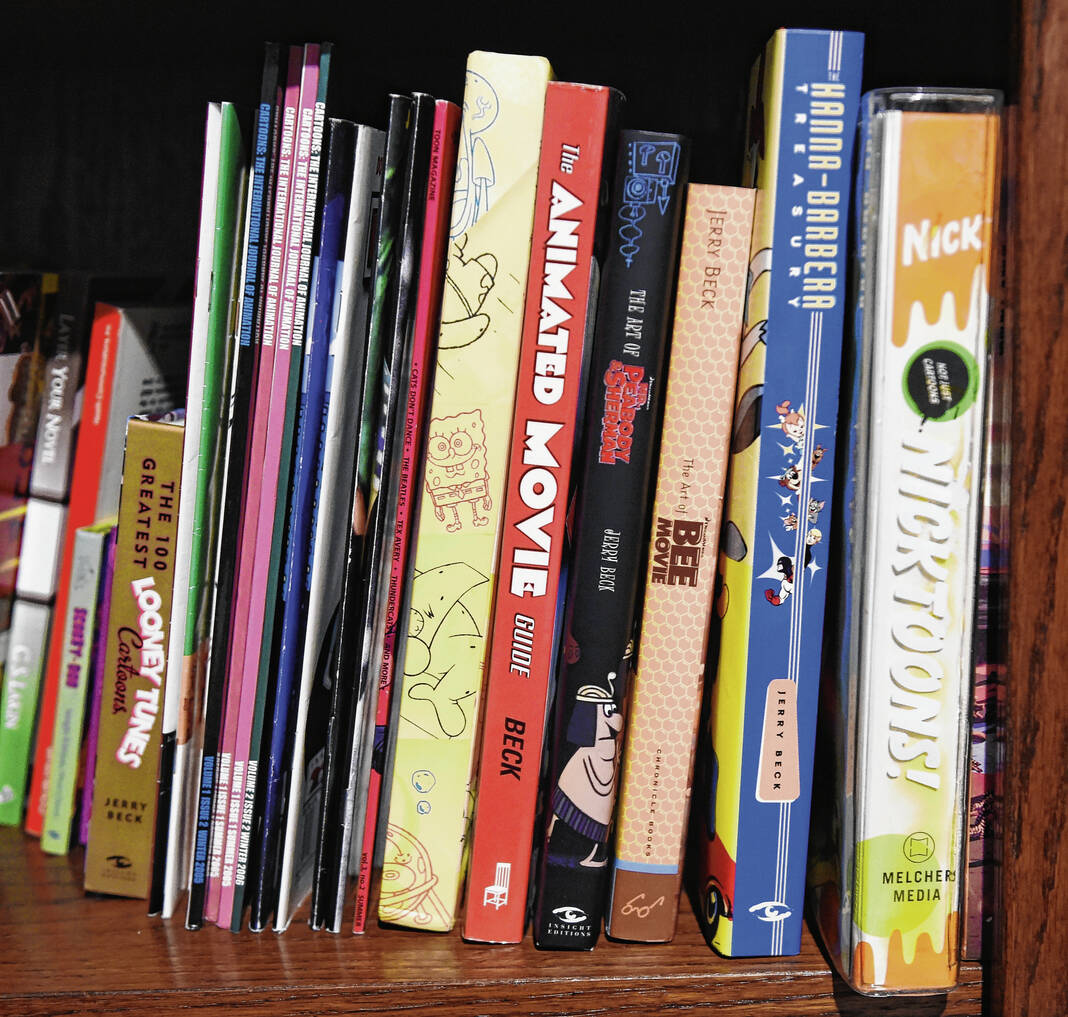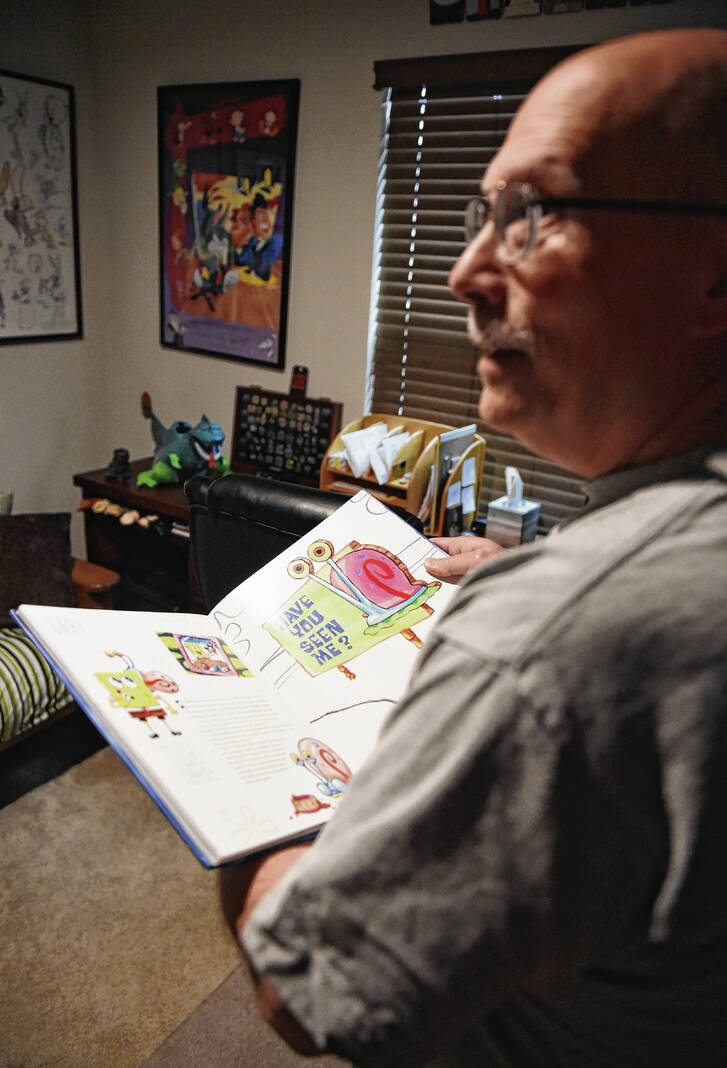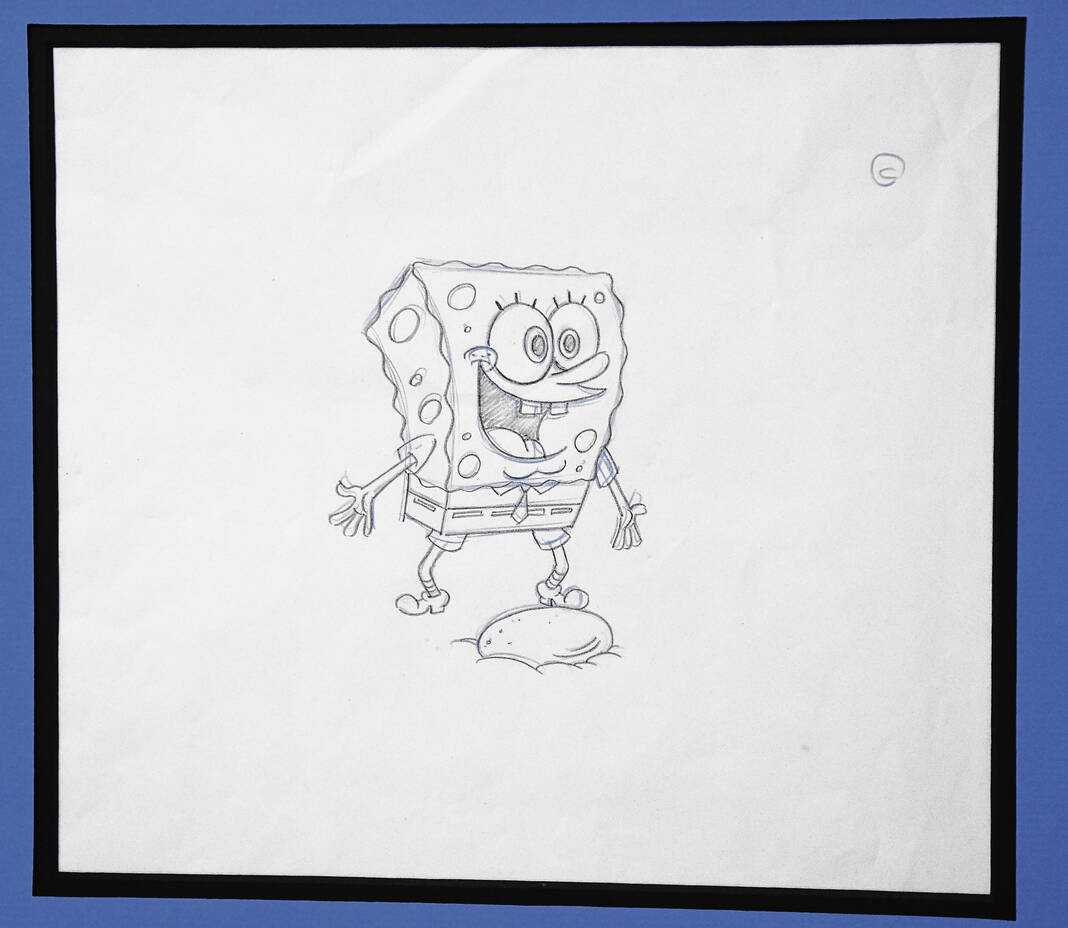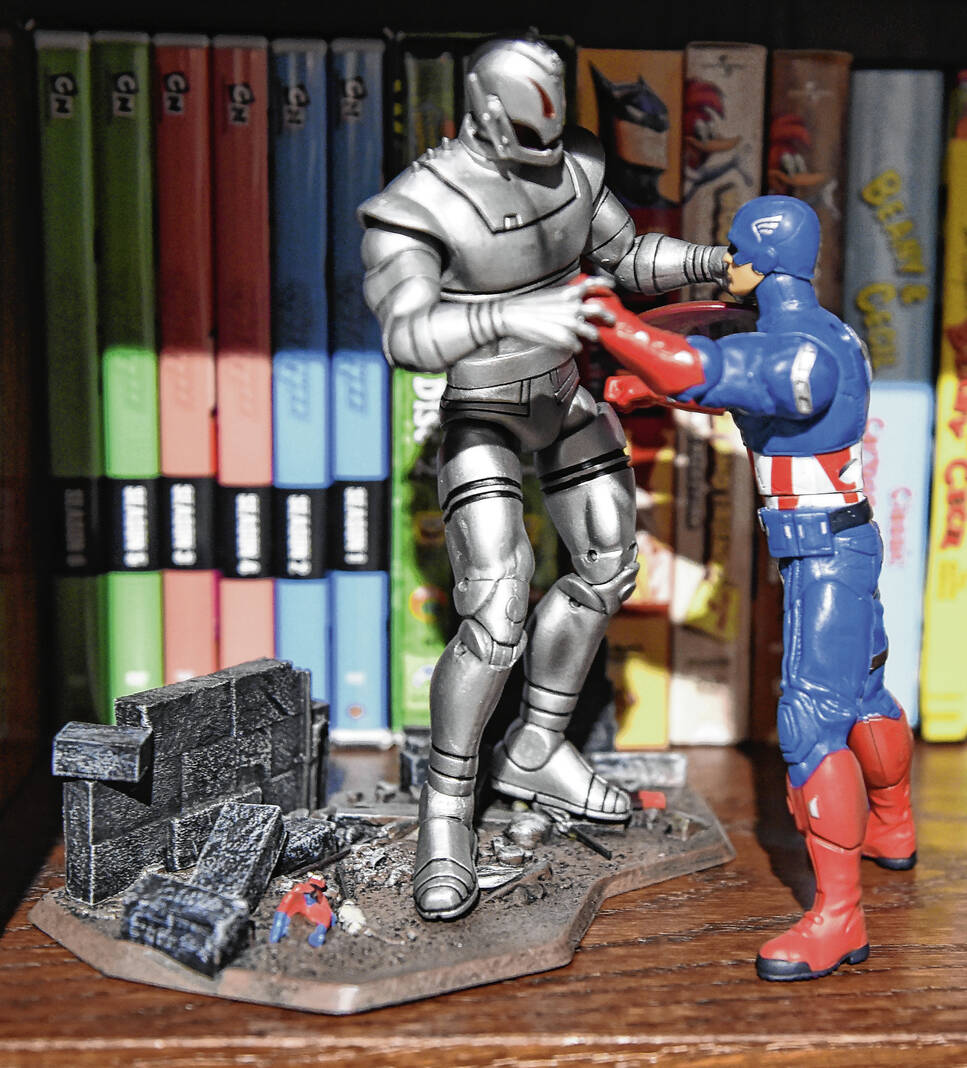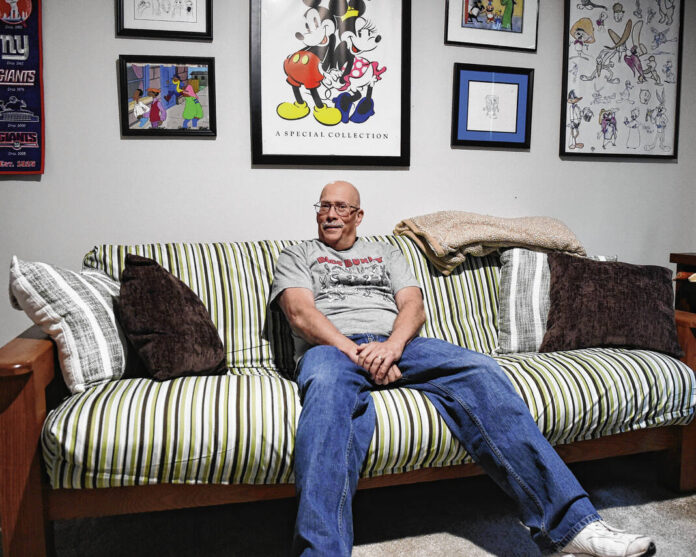
Dr. Marty Goodman, a Whiteland resident and retired psychologist, sits surrounded by animation memorabilia and framed artwork in his office. Goodman has fostered a decades-long secondary career as an animation historian, writing columns and articles, as well as helping write books, exploring the history of cartoons.
RYAN TRARES | DAILY JOURNAL
Cartoons are a lot more than child’s play.
As Dr. Martin Goodman delved into the history of animation, he discovered a serious and scholarly discipline. Much research goes into uncovering the impact of different kinds of cartoons, and those who conduct it took pride in uncovering the truth behind the ‘toons.
“Animation historians are not geeks. They are scholars. It’s an important part of cultural history, and we take it very, very seriously,” he said.
From Mickey Mouse to Bugs Bunny to all kinds of new animation, Goodman knows his cartoons. The Whiteland resident is one of a handful of researchers and scholars specializing in animation history.
In addition to working for 30 years as a psychologist for the Veterans Administration, his secondary career has involved writing regular columns, articles and books on the stories behind beloved characters and the men, women and artistic teams who created them.
Despite the seriousness of the work, Goodman’s passion comes from a simple place — a love for cartoons.
“(Cartoons) are limitless, without boundaries with imagination and expression. You can do anything in a cartoon,” he said. “For decades, if you wanted to see something you could never see in an action movie, you could see it in a cartoon.”
Tucked inside Goodman’s home is an office devoted to his passion for animation. Shelves of books — including many that he helped write himself — cover an entire side. Signed animation cells are framed and hanging on the wall, featuring characters such as SpongeBob SquarePants and Bugs Bunny.
Figurines of characters such as Captain America and Felix the Cat are set up strategically throughout the office.
The memorabilia and knick-knacks dot the shelves and desk belonging to a man known as “Dr. Toon.”
“When I was a kid, I was just drawn toward cartoons. I loved them, and I still do,” he said.
Goodman, 66, established his career working in psychology for the Veterans Administration hospital in Marion. But he developed a parallel career path studying animation and its history.
His childhood interest in the artform as entertainment matured as he grew older. In the 1980s, he went with his first wife to a Betty Boop retrospective in Cambridge, Massachusetts.
“At this time, there were no VHS tapes or CDs or DVDs — no such thing. It was all on 16mm film in the theater, showing all of these Betty Boop cartoons,” he said. “There was a curator hosting the event, and he started reading off all of this information on these cartoons, how they were made, who made them. This guy was so fascinating.”
On the ride home, all Goodman could talk about was how he could do what this curator had done. He started studying whatever history of animation he could find, going to libraries all over the Boston area to track down books and reading about the backgrounds.
But his foray into the history of animation expanded with the growth of the internet. He came across an early website for a publication called Animation Nerds Paradise, and he reached out to the operators of the site about doing some writing for them.
“They said, ‘Yeah, sure, whoever you are.’ It took off from there,” he said.
Goodman’s work as an animation historian started gaining momentum after that initial column. He wrote another, and another. Soon, he was being asked to write on a variety of animation-centric subjects, for a wide range of outlets.
“Every assignment I’ve gotten, I didn’t look for. People would write to me and ask me to help them out with information,” he said.
Getting into the history of the characters and studios takes devoted research. Goodman often contacts the animators directly, searching for background and answers to questions on characters both popular and obscure. The experience has been overwhelmingly positive, he said.
“People in the animation business, without reservation, are some of the nicest people you’ll meet,” he said.
Goodman can tell you all about Mickey Mouse, arguably the most recognized character in history, as well as nearly forgotten characters such as Flip the Frog, who was popular in the 1930s.
As his reputation grew, more and more queries came his way.
“There aren’t very many animation historians around. It’s a very small and select group,” he said. “We all know each other, and help each other out writing.”
One of Goodman’s most frequent collaborators has been Jerry Beck, a noted historian and author who has written or edited several books on classic American animation and classic characters. He has helped with research and contributed writing for a number of Beck’s books, and he considers him a mentor.
“Jerry Beck was my idol. What was cool was, I got to work with him again and again,” Goodman said.
He’s been asked to help with animation festivals and events, some from as far away as Denmark. Indiana University invited him to be a guest lecturer. Goodman helped the Southern Alleghenies Museum of Art put a documentary on a famed cartoon artist. The Canadian Film Institute enlisted his knowledge on multiple occasions. For a time, he was on the voting panel for the Academy Awards’ animation nominees.
The Lincoln Center for the Performing Arts reached out to him for assistance on a retrospective on early jazz cartoons.
“They wanted to know everything that I could tell them about it, and some recommendations for features to focus on,” he said.
Goodman continues to write and work in cartoons. He shares his passion with his wife, Dee. They go to the movies to watch animation features; they’ll host “animation night” at their home. When they were initially dating, their interest in cartoons was what drew them together.
When an old cartoon comes on the TV, Goodman can reel off a series of facts all about it. One time while out to eat, a television at the restaurant was showing vintage cartoons from the early 20th century.
Goodman knew them all.
“We sit there and watches it, and he says, ‘That’s such-and-such cartoon, it was animated by so-and-so and it was put out in 1910. He’ll tell me all this stuff,” Dee Goodman said.
For as much time as he’s put into studying animation, Goodman still finds wonder in it every day. Ask him to name his favorite cartoon, and he says it changes all the time.
“I’ve been asked that so many times, and I never want to get pinned down. I always see something else that blows me away, and that is so terrific,” he said.



